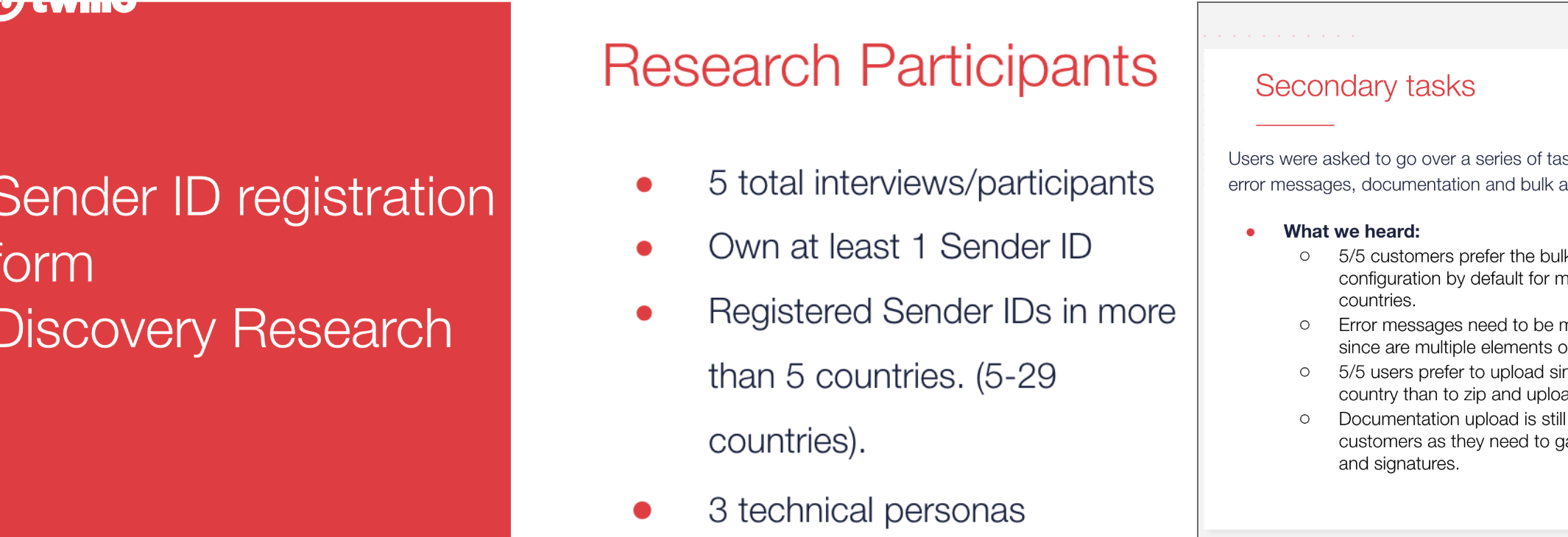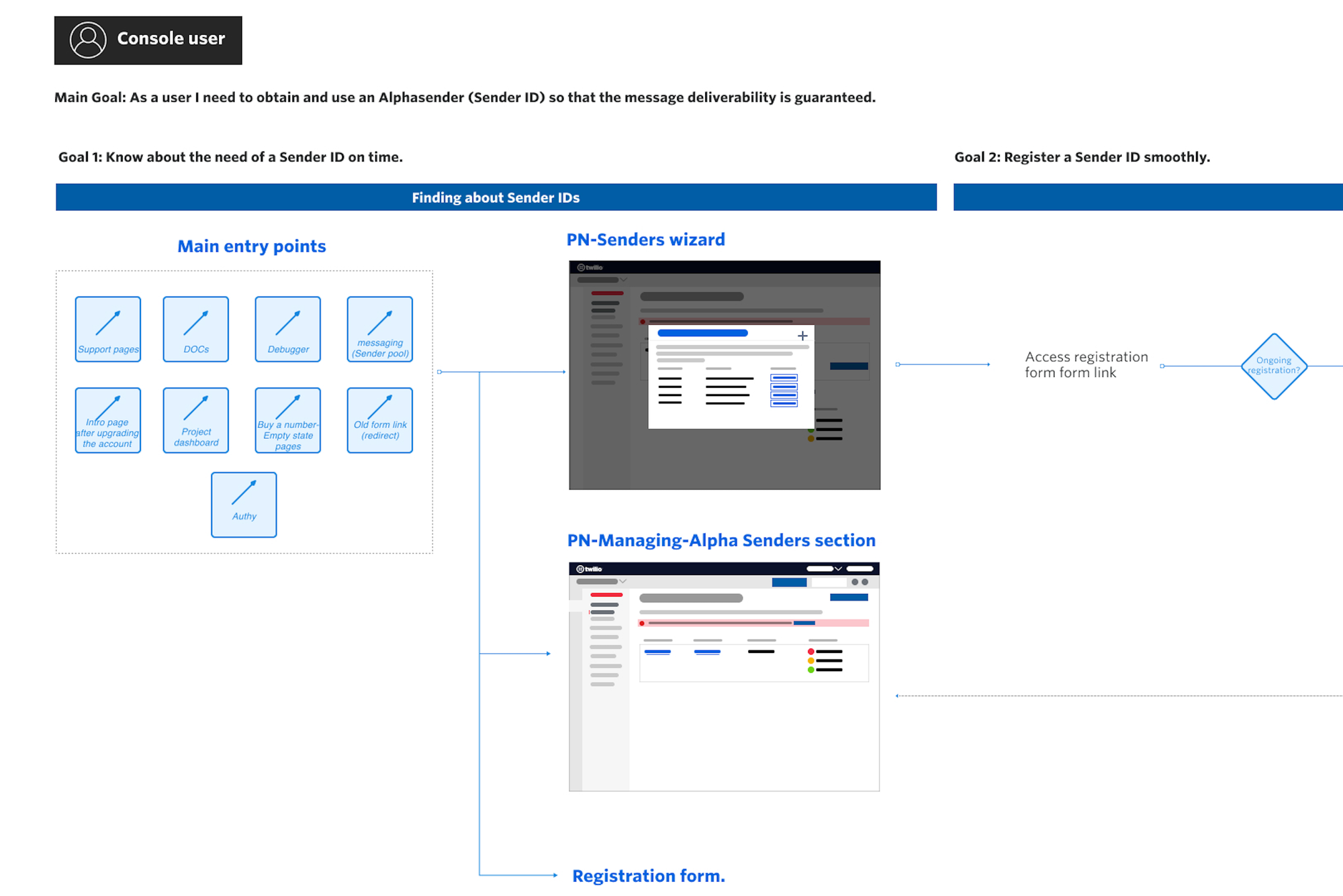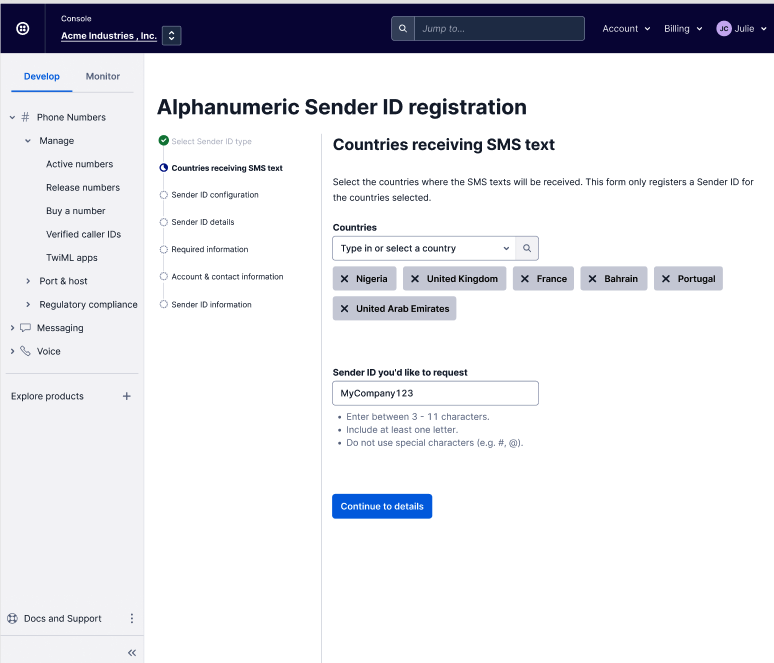Sender ID registration flow [2024]
![Sender ID registration flow [2024]](https://files.cdn-files-a.com/uploads/6822428/2000_690b819aa8ace.png)
Designed a streamlined Sender ID registration experience to help users easily register their business identity for SMS communications.
The project focused on simplifying verification steps, reducing friction, and providing clear guidance throughout the process. Key improvements included intuitive form design, contextual help, automated status tracking, and real-time feedback, resulting in faster approval times and higher user satisfaction.
CONTEXT
To improve the Sender ID registration process, we focused on reducing the time required to complete the registration form, which initially took users approximately 30 minutes. By identifying and including previously missing fields directly in the form, we aimed to eliminate the need for repetitive email exchanges that occurred after submission. Additionally, we worked on informing and guiding customers about the necessity of Sender ID registration, helping them understand when registration was actually required and clarifying the supporting documentation needed. This was particularly important, as around 30% of customers previously contacted support to request Sender ID registration in countries where it was not necessary, highlighting the need for clearer communication and eligibility guidance within the flow.
PROBLEM STATEMENT
Reduce the time to register a Sender ID in a new country, from 2 weeks, to approximately 3 days.

APPROACH
Research Methods: Interviews, product walkthrough, and metrics): Understand the current user experience with its pain points and opportunities (internal and customer users) beyond the registration form: Why do they need to register? How did they expect the process to be? What were the extra steps beyond the form that were consuming extra time, etc?

- Conducted research to gather both quantitative and qualitative data.
- Analyzed information to extract findings and insights for discussion with stakeholders.
- Ideated and created wireframe prototypes.
- Performed user testing on concept prototypes and refined designs accordingly.
- Visualized the current user flows to initiate the discussion with product and engineering and then creating the ideal user flow.
- Prototype creation: Creating prototypes to discuss with the team and test them with customers and internal users to refine the final designs. Total of 2 prototypes, 3 sessions of internal and customer testing to refine the final UX.
- Prepared, discussed, and handed over interaction specifications for engineers to implement. Overseeing implementation and applying possible UX changes based on technical discoveries previously discussed.
Tools Used: Figma was the primary tool for compiling and analyzing information, as well as for designing prototypes.
SOLUTION & OUTCOME
The Sender ID registration consisted of two intertwined flows: the Operations’ current and ideal user flows (internal applications) and the Customer’s current and ideal user flows. Average time to complete the form: 30 minutes to 11 minutes.
Outcome
Time reduction: From 2 weeks to 2 days (average).
Ticket reduction: Due to adding features like multiple-country registration and integration in the current Console product. (dynamic form and less information to ask via Email).
Experience monitoring for future decisions: Monitoring the user experience through the Looker and Heap analytics dashboard.


